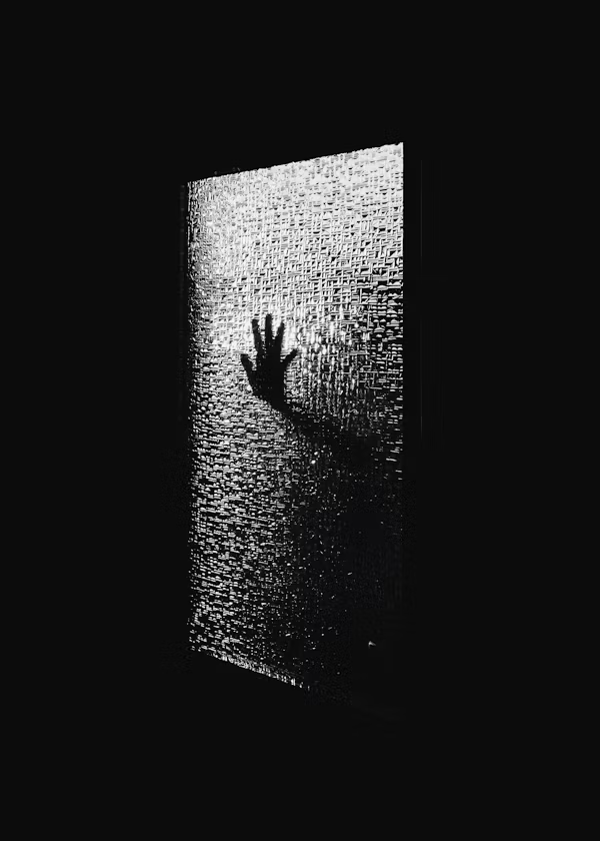Part of the Complete Guide to Understanding Addiction
What Is Xanax, and How Does It Lead to a Xanax Addiction?
Most people know the drug by its well-known brand name, Xanax, although the generic name is Alprazolam. It is a prescribed benzodiazepine that, when used as prescribed, can help manage anxiety and panic disorders. Typically, it is only prescribed in severe cases of these disorders as it is a strong anti-anxiety with addictive qualities.
Alprazolam addiction doesn’t discriminate. It affects anyone from their teenage years well into their fifties and sixties. The drug often produces a feeling of drowsiness, and feeling ‘out of it,’ and can cause blackouts when abused. When used properly, Xanax effectively manages anxiety symptoms, making the user feel calmer and relaxed.
Overuse of Xanax can lead to serious adverse effects that people need to be aware of. Below, Avenues Recovery, leaders in addiction rehabilitation, bring you a guide to Xanax, along with statistics that are important to know for anyone considering using Xanax recreationally.
How Does Xanax Work?
Xanax acts on the brain and central nervous system to bring about a calming effect felt throughout the entire body.
Xanax should only be used as directed by a physician, and all patients are highly encouraged to read the Medication Guide given by the pharmacist before they begin taking it. How honest you are with your doctor determines how the drug affects your symptoms shortly after beginning treatment.
The doctor is likely to increase the dosage slowly until you reach a dose that effectively treats your anxiety or panic disorder.
Is Xanax Addictive?
Yes, Xanax can be addictive. When needed, Xanax should be taken for a short period. The longer patients take Xanax, the higher the risk of addiction.
Once symptoms subside, patients are encouraged to find avenues that relieve their anxiety, these may include a change of lifestyle choices and introducing calming remedies, for example:
- A regular sleep and exercise schedule
- Healthy diet
- Hobbies, such as journaling
Xanax Addiction Signs and Symptoms
The common symptoms of Xanax are usually described as:
- Calming
- Potential drowsiness
- Physically and mentally relaxing
However, when the drug is abused, the symptoms can be quite different. Most people describe a euphoric feeling and even memory loss.
When Xanax is abused, and the person is facing an overdose, they will most likely experience the following symptoms:
- Mental confusion
- Muscles twitches
- Slurred speech
- Decreased coordination
- Slow reaction times
- Visual and auditory hallucinations
- Slow or shallow breathing
- Chest pain
- Tremors
- Convulsions, and
- Loss of consciousness

Physical Signs of Xanax Addiction and Abuse
There are also several physical consequences that recreational Xanax users face, including:
- Irrational emotional responses
- Slowed or confused thought processes
- Permanent memory loss
- Loss of certain cognitive abilities
- Permanent decrease in muscular coordination
When Taking Xanax Leads to Xanax Addiction
Xanax is most commonly abused when the patient feels their doctor isn’t prescribing them a high enough dose, so they look to recreational Xanax for additional help. Maybe the person doesn’t trust their doctor, or their doctor has denied them a higher dose.
Another common abuse situation is when the person is afraid to admit they have a disorder or don’t have medical insurance to help pay for their treatment.
In these scenarios, people will begin using recreational Xanax. This is when abuse and addiction occur because the person isn’t educated on how to properly dose for their symptoms or realize they feel euphoria when they take a larger dose. This feeling is typically what people describe after taking a large dose and then admit that they wish to feel that way more, which leads to them taking larger doses consistently and increasing their tolerance quickly. This is a recipe for addiction in nearly all cases.
What Does Xanax Look Like?
While Xanax often takes on different looks, it is always found in pill form. Typically, you will see these variations:
- White oval with “Xanax” stamp
- Blue oval with “Xanax” stamp
- Peach oval with “Xanax” stamp
- White rectangular bar with “Xanax” stamp
- Yellow and green rectangular bars with “S 90 3” stamp
What Does Xanax Taste Like?
Xanax doesn’t necessarily have a distinctive taste to it. It is a chalky pill the patient swallows, so it doesn’t contain much flavor.
The Fake Xanax Pill
People need to be aware of how popular fake Xanax is on the streets today. Not only has it never been easier to come across unauthentic Xanax, but it is virtually impossible to differentiate real Xanax from fake Xanax when purchased recreationally. This is why recreational Xanax use is heavily discouraged.
The only way to tell the difference between the two is how it makes you feel soon after taking it. The symptoms and side effects of fake Xanax are far different than those of the real thing. The fake stuff is laced with Fentanyl and leads to overdose more often than not. When it comes to anxiety medication and dealing with anxiety disorders, patients should always trust a doctor before resorting to Xanax for recreational use.
If your current dosage isn’t sufficient enough, talk with your doctor. Be honest with your doctor, and they will try their best to improve your situation, so you don’t have to overcompensate with recreational Xanax.
How Xanax Affects People
Much like other anti-anxiety medications, Xanax can have different effects on different people. A person’s diagnosis, along with their daily symptoms, and disorder management, plays a huge part in the recommended dosage and how the medication affects them.
Other factors that affect the dosage and how Xanax works include:
- Age
- Weight
- Height
- Body Mass Index
- Metabolism
Scientifically speaking, Xanax binds to the GABA (gamma-aminobutyric acid-A) receptor in the brain. In addition to this, Xanax is also a central nervous system depressant, meaning that it slows down all central nervous system functions. The main functions include heart rate regulation, blood pressure, breathing, and body temperature.
Upon doing so, the person feels an overall calming effect throughout the body. The person tends to become more relaxed physically and mentally. This makes Xanax an ideal candidate for anxiety relief.
Xanax Street Names
When it comes to street names, they often reflect the general color or shape of the substance. Sometimes the names reflect how the substance makes you feel. Xanax is no different.
Below are some of the common street names known for Xanax:
- Bars
- Z-Bars
- Fannie Bars
- Footballs
- School Bus
- Yellow Boys
- White Boys, and
- Handlebars
There are also a few different Benzodiazepines with their own medical Xanax street names, including:
- Diazepam (Valium)
- Clonazepam (Klonopin), and
- Lorazepam (Ativan)
What Symptoms Does Xanax Treat?
The intended use of Xanax is for acute symptoms. Typically, the best cases for Xanax are for short-term treatment. After a traumatic event in one’s life, the anxiety onsets rapidly and causes severe panic attacks. The medicine helps the person calm down to see the situation more clearly and hopefully heal from the experience.
However, it is understood that some patients have severe anxiety and panic disorders that make it nearly impossible to only take Xanax for a short period. The dangers of dependency and addiction are greater in long-term Xanax use, and some physical consequences may result as well.
Patients must follow their doctor’s advice word-for-word and be honest with their doctor throughout their time taking Xanax. You and your doctor may discover times when your anxiety isn’t as triggered, and you can potentially cut down the dosage or find another way to refrain from dependency and addiction. The main thing is to try to keep the tolerance down as much as possible.
Can You Overdose on Xanax?

Overdosing on Xanax is entirely possible, and unfortunately all too prevalent. In 2019, nearly 10,000 people died from a Xanax overdose, a number that decreased since 2017. This is partly to do with doctors holding higher restrictions on who is prescribed the drug in the first place.
However, this number could potentially rise because of the recent influx of fake recreational Xanax. Much of the world had a stressful 2020, and more people may likely have abused Xanax because of it. As a result, the overdose and fatality rate has probably gone up, but there is no new information to confirm this just yet.
Detox and Treatment for Xanax Addiction
Depending on the severity of the Xanax addiction, detox may take place in either an inpatient or outpatient facility, utilizing a range of detox and treatment programs. Residential addiction treatment is recommended for those suffering from severe addiction because these facilities have 24-hour medical supervision, and people with higher tolerances will potentially have more severe withdrawal symptoms.
The detox and treatment process is a slow tapering-off process to help minimize withdrawal symptoms as much as possible. More often than not, patients are switched from Xanax to an equal dose of Diazepam. They begin experiencing withdrawal symptoms during this time, which a doctor monitors. The Diazepam dosage is decreased slowly until the person no longer has the drug in their system.
Xanax addiction is scarier than ever before, mainly because of the newly-found fentanyl-laced equivalent found on the streets. Thankfully, mental health awareness and acceptance are on the rise, which has helped people feel more comfortable going to the doctor for their illnesses. Hopefully, this will continue to increase as fewer people take recreational Xanax and trust their doctor instead!
Cure Xanax Addiction
Drug rehab centers are equipped to handle addiction treatment most effectively. If you or a loved one are addicted to Xanax, reach out to Avenues Recovery for professional drug detox and rehab treatment. Our professional and caring staff have helped thousands of people overcome their addictions, and can help you too. Contact us today to take the first step on your journey to healing.


